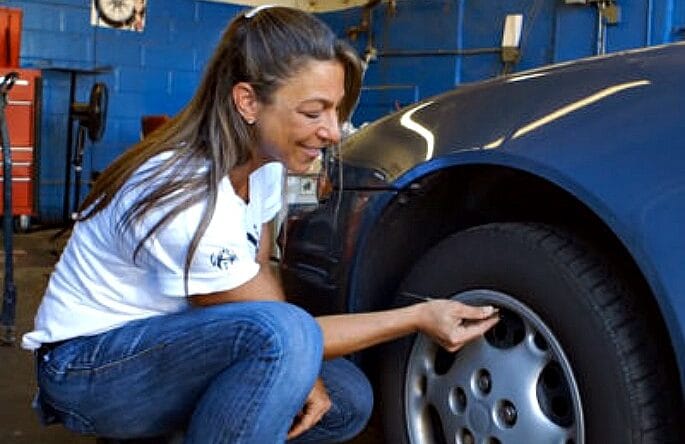Need New Tires? What You Should Know About Choosing the Right Tires for You

I’ve never met a driver who was excited to buy new tires. Most of my customers look so disappointed when I share the bad news. It’s hard to blame them. Tires seem like a big investment. Like it or not, you’re going to need to replace your tires at some point. Here’s how to choose the right tires for you.
You’re Perceiving the Cost Incorrectly
Did you notice how I used the word “seem” in the previous paragraph? Tires aren’t that expensive. You’re not looking at the investment from the right perspective. I’ll show you what I mean.
People think gas is cheaper than tires, because they only spend $20-30 at a time. Let’s look at this cost another way. How much do you spend on gas per mile? It depends on fuel economy and driving habits, but I can make an educated guess.
According to AAA, the average driver spends $1,681.50 on gas annually. The average American drives 15,000 miles per year. That adds up to 11.2 cents per mile. This math isn’t true for everybody, but it’s good enough to illustrate my point.
A decent set of tires will cost roughly $500. Assuming you don’t run over a nail or broken glass, your tires should last for about 50,000 miles. That adds up to a penny per mile. Surprised? In the long-term, tires are much cheaper than fueling up!

It’s not a deal if it isn’t best for you.
Remember This When You Go Shopping
There’s nothing wrong with being frugal. Besides, can you really tell much of a difference between the generic and name-brand pasta sauce? Cutting costs on everyday expenses can help you save money for a vacation or new car (I want this one).
This isn’t the time to be cheap. Tires are your first line of defense. They give your car the strength and stability it needs to prevent swerving in slippery or snowy conditions. In fact, some tires are especially designed to navigate this type of situation.
Do you really need specialized tires? It depends on the climate and road conditions. People who live in New York – where we have big blizzards every year – might want to invest in winter tires. If you rarely experience more than a dusting, it’s probably not worth the money.
Do You Need One, Two, Three, or Four Tires?
In a perfect world, you would be able to replace all four tires at a time. Your car performs better when all of your tires match. Look at it this way. If you wear a different sneaker on each foot, do you think that will feel awkward? Yep! Walking and running wouldn’t feel very natural.
Tires are the same way. As the miles go by, their tread wears down. Ideally, you want them to reach the end of their life cycle at the same time. Sounds easy enough, but sadly we don’t live in a perfect world. Tires could require replacement at different times for many reasons. Ever ran over a nail? Not fun!
I have good news and bad news. In these situations, it’s okay to ignore my recommendation to replace all four tires at a time. However, you will have to buy one more tire than you feel like you need. Why? Only replacing one tire will mess up your alignment. The front and rear tires should be matching pairs.
Ignore this recommendation at your own peril (especially during wet or snowy weather). You’ll notice some slipping, sliding, and strange handling issues. My analogy RE: mismatched shoes explains why. If you have two different types of tires on your left and right wheels, your car’s performance will suffer. In the end, you’ll spend more money, because they will wear out faster.

Do you need seasonal tires?
Should You Buy Winter, Summer, or All Season Tires?
Edmunds tested the performance of all three types of tires. It’s an intriguing read. I’ll summarize their findings here. They tested each tire in a dry, wet, and wintry environment. The goal was to find out how long it takes to stop and accelerate to a certain speed. Winter tires perform best in snowy conditions and summer tires perform best in dry conditions. This shouldn’t be surprising, right?
However, they did discover something interesting about driving in wet conditions. One of the tests involved hitting the brakes at a speed of 60 mph. Winter tires stopped at 181 feet. Summer tires stopped at 157 feet. All season tires needed 215 feet to accomplish the same thing. If you live in an area where snow is extremely rare, you might as well buy summer tires and use them all year. Otherwise, consider investing in summer tires and winter tires (but make sure to switch them before the first snow arrives!).
Do you have any questions about tires that weren’t answered here? If so, let me know in the comments. Next month, I’ll show you how to keep your new tires in good shape.
